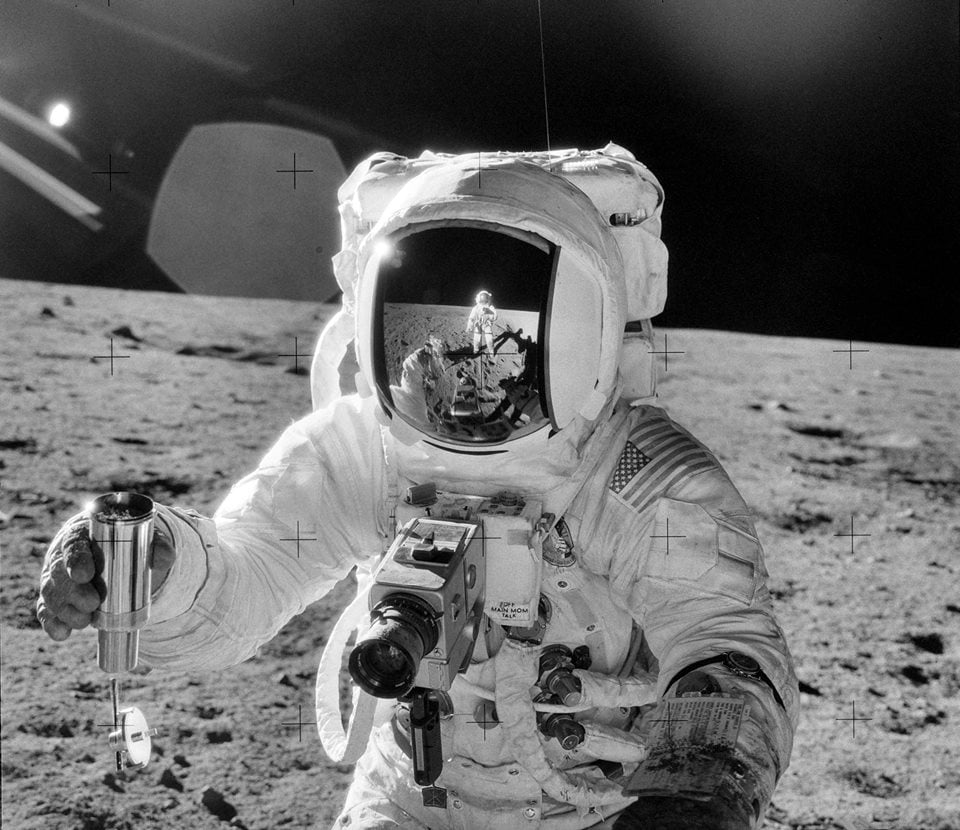[embed]
When NASA recently posted over 8,000 images from the
Apollo missions on Flickr
, I just knew something good was going to happen! There are so many creative people out there that just need a little spark, a little inspiration and they're off creating wonderful things. Three videos so far have surfaced based on the imagery from NASA's Apollo Archive.
The first comes from
Tom Kucy
who posted his video titled "Ground Control" on You Tube and said this is a "small personal project, bringing NASA's Apollo Archive photos to life." This video is like a 2.5 minute mini-documentary of the Apollo missions. Kucy uses stunning photos and audio from the Apollo missions to create a truly stunning video. As one commenter said, "This happened prior to my birth, and I truly feel like I was there. Nice, nice work!"
Kucy also added that he has the intention of bringing more missions life, so stay tuned for more.
The second video
was created by
harrisonicus
on Vimeo, who said he was looking through the Project Apollo Archive and "at one point, I began clicking through a series of pics quickly and it looked like stop motion animation. So, I decided to see what that would look like without me having to click through it."
It's like a flipbook of the images, with music:
[embed]
The original
Apollo Archive website
has been online since 1999 and was created by Kipp Teague as a companion website to his "
Contact Light" site
, a personal retrospective on Project Apollo. NASA now has
posted the imagery on Flickr
, giving them wider accessibility.
The third is a short gif video put together by planetary astronomer
Alex Parker
and posted on Twitter. He found new images of the damaged Apollo 13 Service Module, cleaned them up a bit and created this wonderful animation:
Damaged Apollo 13 Service Module sequence. I pulled from https://t.co/B2LGdFFq6S, cleaned them up, and animated them. pic.twitter.com/ZJrkhNlpSO — Alex Parker (@Alex_Parker)
It's a great new look at the service module, which was damaged when an oxygen tank in the module exploded. When the Apollo 13 crew jettisoned the crippled Service Module as they returned to Earth, they saw the extent of the damage from the explosion of the tank. "There's one whole side of that spacecraft missing!" Jim Lovell radioed to Mission Control, his voice reflecting his incredulousness at seeing the damage of a 13-ft panel blown off the spacecraft.
You can read more about the damage on the SM
in an article in our series on Apollo 13 here.
Below are a few of our favorite images from the collection that we've found so far. Enjoy, and make sure you
check out all the images
for yourself!
[caption id="attachment_122831" align="aligncenter" width="668"]
The Apollo 15 Saturn V Space Vehicle is seen from a camera located at the mobile launcher's 360-foot level at Launch Pad 39A during venting of the liquid oxygen during the "wet" portion of the Countdown Demonstration Test on July 13, 1971. Credit: NASA/KSC[/caption]
[caption id="attachment_122832" align="aligncenter" width="459"]
The Lunar Module for the Apollo 17 mission undergoes final checkout in the Manned Spacecraft Operations Building prior to mating to the Saturn V launch vehicle. November 3, 1972. Credit: NASA.[/caption]
[caption id="attachment_122833" align="aligncenter" width="561"]
The Earth as photographed from the Apollo 4 mission, the first, unmanned test flight of the Saturn V, which reached an apogee of 18,092 kilometers. November 9, 1967. Credit: NASA. [/caption]
[caption id="attachment_122834" align="aligncenter" width="580"]
Crescent Earth as viewed by the crew of Apollo 15. Credit: NASA. [/caption]
[caption id="attachment_122837" align="aligncenter" width="550"]
The Apollo 17 Lunar Module "Challenger" ascent stage after returning from the lunar surface, photographed from the Command Module "America" prior to rendezvous. Credit: NASA/KSC.[/caption]
 Universe Today
Universe Today
